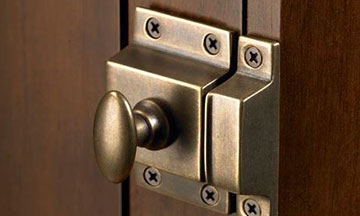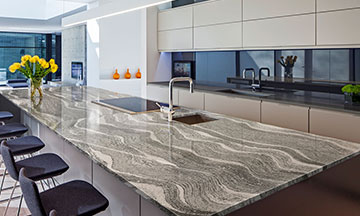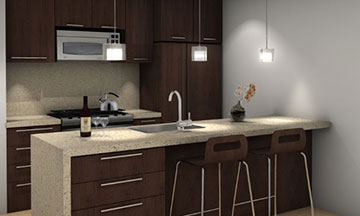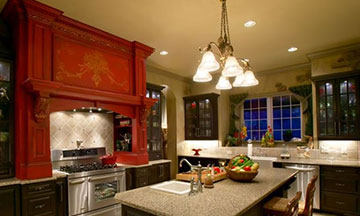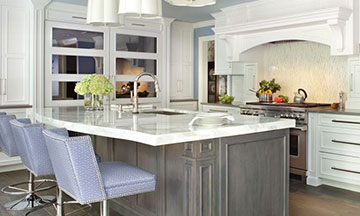Ergonomics in the Kitchen
by C. Rosenberg
Ergonomics is quite the buzzword for anyone in interior design. If you’re renovating your kitchen anytime soon, it should be your buzzword as well. With all the lifting, bending, stretching and squatting going on during meal prep and cleanup, you want to make sure that your kitchen is designed with your needs in mind.
Lots of back pain and sore muscles in the neck and shoulder areas result due to a lack of ergonomic planning in the kitchen.
But it doesn’t have to be that way.
Organizing Smarts
The first thing you’ll want to do to get your kitchen functioning in an ergonomically efficient manner, is to clarify what your needs are in the kitchen, which gadgets and tools you use most often, and how much everything weighs.
You can categorize your usage of items as daily, frequently, or rarely.
Items that are used daily should be within easy reach at the area it’ll be used, those used rarely can be in a more difficult to access place (such as very high or very low shelves), and frequently used items should be someplace in between.
You also want to keep in mind how well you can deal with the weight of any given item. Ideally, heavy items should be kept between hip and shoulder height to avoid over-stretching. Light items (such as cereal boxes) can go into less accessible areas (since you’ll mind a lot less if a box of cereal drops on your toes, than you will if an electronic mixer does).
Pull out drawers, Lazy Susans, and multi-tiered storage racks, also work wonders in alleviating the ‘deep reach’ and ‘deep bend’ positions: It means that your items reach out to you instead of you having to bend yourself into weird shapes to get to them.
Appliances
The jury is still out whether bottom – freezer – top – fridge are better for your back, or the side by side version is the magic answer to your ergonomic ills.
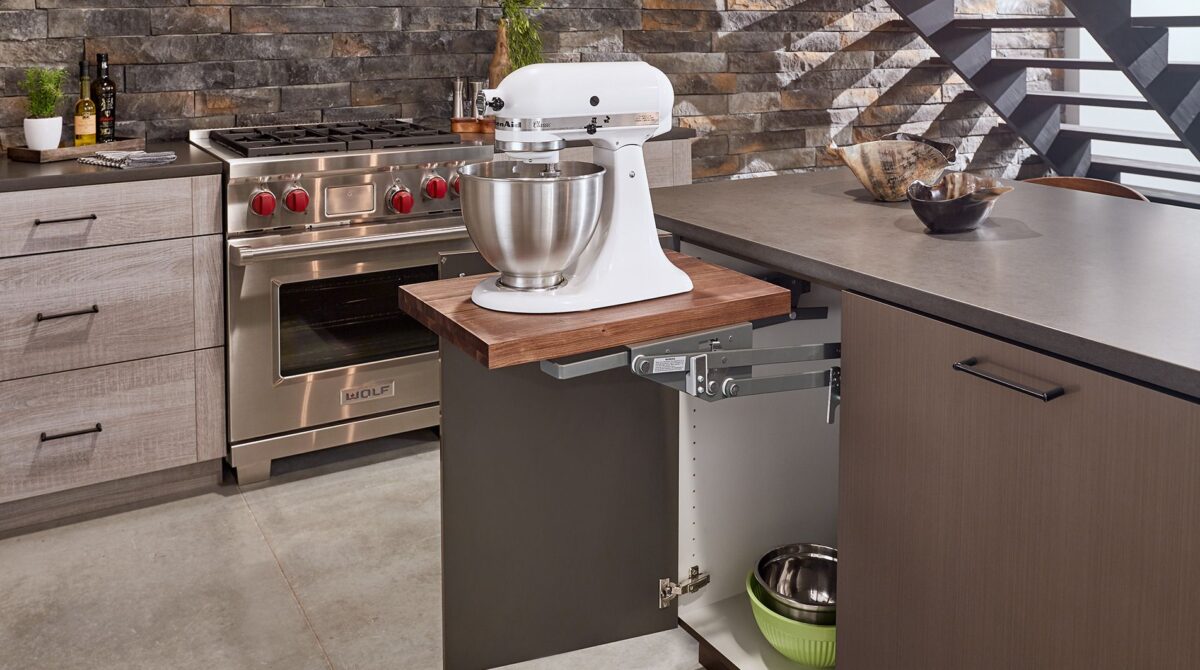
Both serve to eliminate frequent bending by allowing you to keep more frequently used items within easy arms reach. Many refrigerators also allow you to reconfigure placement of drawers: Utilize that flexibility to organize your refrigerator’s contents well.
Even more important than the refrigerator, is the sink. That’s where many of us spend a chunk of time scrubbing charred pots clean. While deep sinks may be a nice hideaway for your dirty dishes, a shallow, raised sink gives you more leverage for your comfort.
If you’re lucky enough to have a dishwasher, and are spared from long hours at the sink, an elevated dishwasher can save your back as well. If space is an issue, you can create a drawer for storage beneath the dishwasher, and then enjoy breezy loading and unloading without constant stooping.
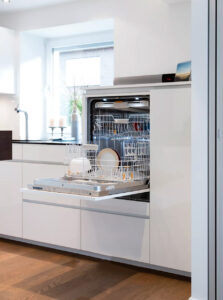
You may consider a wall oven, with strategic height placement, if you spend lots of time baking. This will go a long way in alleviating all that stooping which comes with a free-standing range oven.
Electrical outlets too, should be strategic in the kitchen. Multiple outlets next to areas where you store your appliances mean that you don’t have to lug your appliances around the kitchen to get them plugged into an outlet.
Flooring
Most of us tread an untold number of miles in the kitchen on a daily basis – yet we don’t necessarily give our floors the attention they deserve. While ceramic tiles are wildly popular in the kitchen, that doesn’t mean they are good for anything more than aesthetics. Wood and rubber floors go a far longer way in keeping you balanced and comfortable while going about your kitchen tasks.
Since hardwood flooring is quite the thing in kitchens today, they are a great choice for both ergonomic and aesthetic reasons. As far as rubber flooring goes, a large rubbery expanse in your kitchen is not that attractive. A great alternative is rubber mats strategically placed at heavy-traffic points such as your stove and sink.


